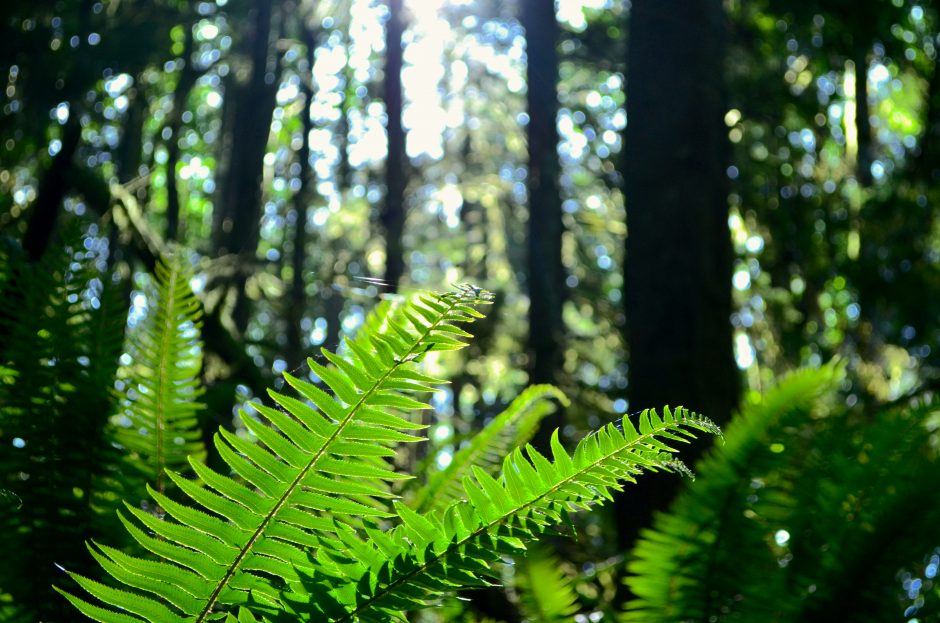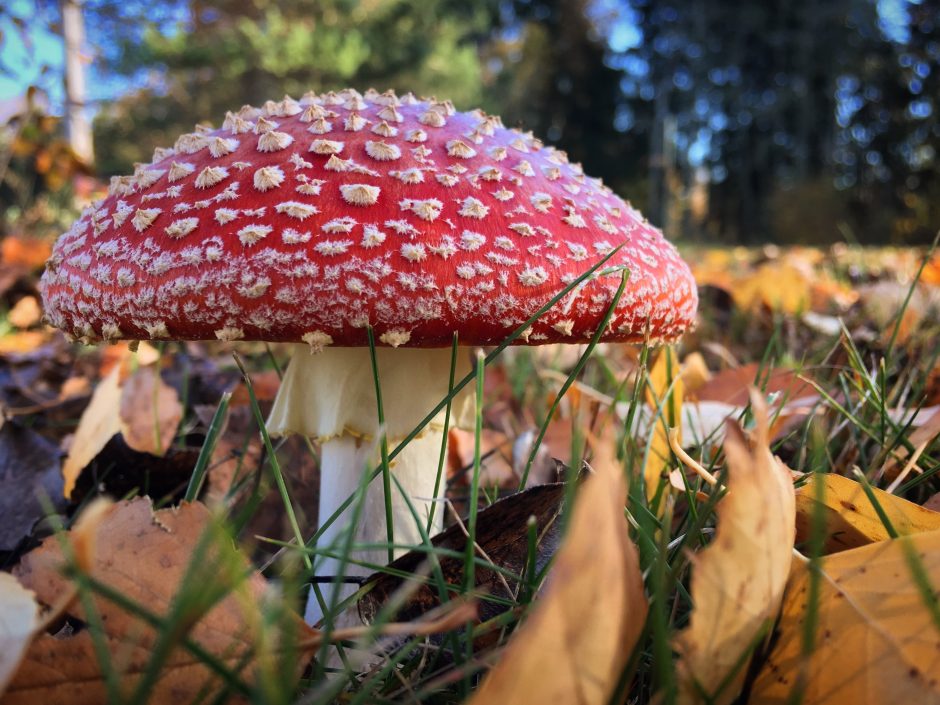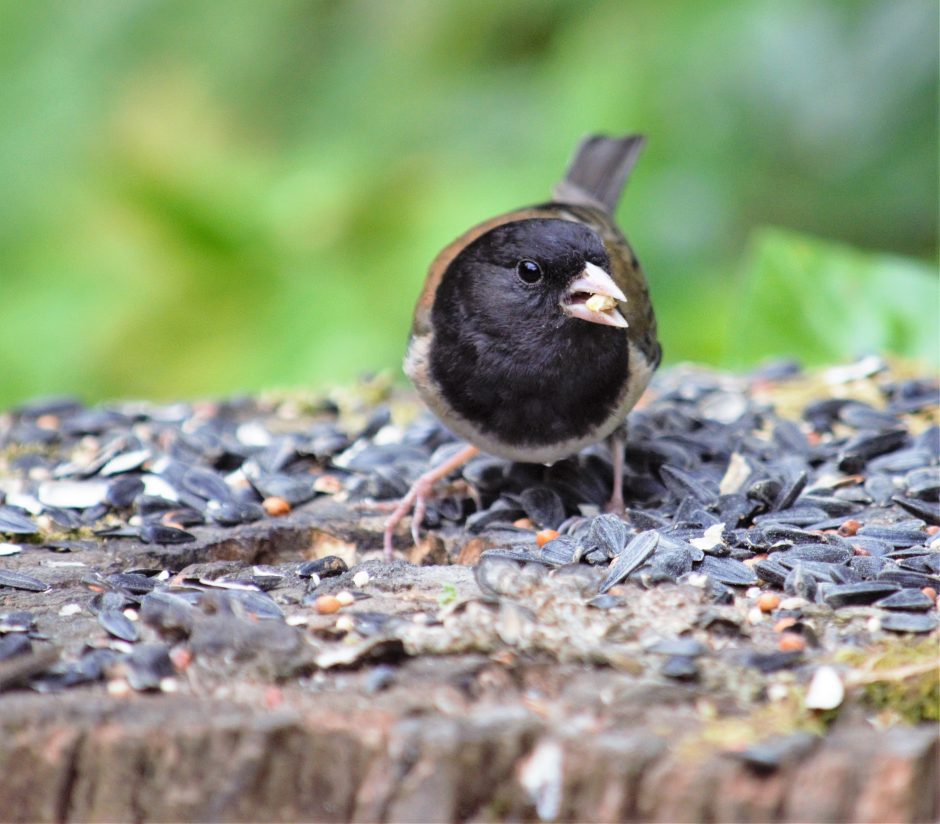This blog discusses the flora and fauna found around UBC’s Point Grey campus and in Pacific Spirit Park. As a forestry student here at UBC I learn a lot about the history of Pacific Spirit Park, and I have spent quite a bit of time learning about the native vegetation. Pacific Spirit Park is such a special place and I want to acknowledge that Pacific Spirit Park and UBC are located on the unceded, ancestral and traditional territory of the xwməθkwəy̓əm (Musqueam) People.
UBC’s Vancouver Campus is known for its beauty and scenic views. Located right by the beach and Pacific Spirit Park there is an abundance of plant and animal life to be found. As busy students, it can be difficult to slow down to appreciate the diversity of native flora and fauna that is around us and see just how much life is around us on our busy day to day. Hopefully this blog post can serve as a reminder to take a step back and look around. Here are some common native trees, plants, and animals found around campus!
Sword ferns

Sword Ferns! They’re everywhere and once you start seeing them you can never stop. These dark green ferns can grow up to 1.5 metres tall and are distinguished by the lobes at the base of the leaf’s stems (dandurston, 2016). These ferns can be found all over campus but are most abundant around Pacific Spirit Park and the Wreck & Tower Beach area.
Salmon berries

Salmon berries, have you ever heard of them? Personally, I never knew about them until I moved out West. These thorny golden-stemmed shrubs grow up to a metre tall and bloom pink flowers in spring, producing a delicious raspberry-like fruit (habitatdana, 2016). Though the fruit is edible, I don’t recommend eating berries from plants you are unfamiliar with! Salmon berries can be found throughout Pacific Spirit Park and in areas of campus that are closer to the park.
Fly Agaric mushroom

Fly agaric mushrooms are an iconic and vibrant mushroom that can be found all over campus in the late fall months. These red and orange mushrooms with white dots on the cap are found all over the world and are deeply embedded in many fairy tales and folklore (Jenny, 2023)!
Red Cedar

Walking around campus, this iconic BC tree species may be seen all over! Out of the two tree species mentioned here, cedars are the easiest tree to identify, in my opinion. Western Red Cedars are a softwood tree species that has grey stringy bark (B.C. Ministry of Forestry, n.d.). This tree species is found all over the coastal area of BC.
Dark-eyed Junco

Dark–eyed Junco are a sparrow with a dark-grey or brown body, white tail, and pink beak (Cornell University, n.d.). You can often see these birds foraging on the ground and low in bushes (Cornell University, n.d.). I love seeing these little guys skitter around, chirping and foraging in the bushes. These birds can be spotted all over campus.
Conclusion
Interested in learning more about the abundance of wildlife found around campus? I suggest checking out the app iNaturalist. It is a great community science app that allows users to identify different plant and animal species and to help others with identifying different species as well. I would also love hearing about any of the flora and fauna you spot around campus in the comments below!
References
Cornell University. (n.d.). Dark-eyed Junco Identification, All About Birds, Cornell Lab of Ornithology. Retrieved December 4, 2023, from https://www.allaboutbirds.org/guide/Dark-eyed_Junco/id
dandurston. (2016). A Guide to Ferns of the Pacific Northwest. IntoCascadia. https://intocascadia.com/2016/10/28/an-easy-guide-to-ferns-of-the-pacific-northwest/
Ministry of Forestry. (n.d.). Western redcedar—Province of British Columbia. Province of British Columbia. Retrieved December 4, 2023, from https://www2.gov.bc.ca/gov/content/industry/forestry/managing-our-forest-resources/silviculture/tree-spe cies-selection/tree-species-compendium-index/western-redcedar
habitatdana. (2016). Salmonberry, Rubus spectabilis. Native Plants PNW. https://nativeplantspnw.com/salmonberry-rubus-spectabilis/
Jenny. (2023). Fly Agaric: The Mushroom, The Myth, The Facts – Mushroom Appreciation. Mushroom Appreciation. https://www.mushroom-appreciation.com/fly-agaric.html
